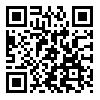
نشریه علمی پژوهشی طب انتظامی Journal of Police Medicine

BibTeX | RIS | EndNote | Medlars | ProCite | Reference Manager | RefWorks
Send citation to:
URL: http://jpmed.ir/article-1-335-en.html
2- Associate Professor, Department of Health Services Management, Islamic Azad University, Science and Research Branch, Tehran, Iran. ,
Background: Taking the necessity of reducing travel and treatment time, preventing from road accidents and penetrating inaccessible areas such as mountains into consideration, air rescue service providing advanced remedial measures facilities, plays an important role in reducing mortality. The purpose of this study is to consider time indicators of pre-hospital emergency care services to patients transported by Tehran Emergency helicopter to Imam Khomeini Hospital of Tehran in 2014. Materials and Methods: This is a descriptive - observational study, the Tehran Emergency helicopter- 2014 transported patients' data of which have been taken from Emergency Data Center. Data analysis was performed using SPSS software, Kolmogorov-Smirnov, t, and binomial tests. Results: A total of 175 patients were transferred to Imam Khomeini Hospital of Tehran in 134 air emergency service missions. Accident was the most common transfer cause (69%). Damavand Hospital, as the highest, accounted for 14.3% of the missions, so Haraz was the most prolific region in road accidents. Most of the missions were carried out at 11-13 AM and 1-3 PM. 63% of patients were transferred in tertiary times. The most taken remedial measures included: fixing the limbs (57.1%), the assessment of GCS (95.4%), bleeding control (62.3%), blood flow control (99.4%), breath control (93/7%) and opening the breath canal (46.3%). Average communication time was 7.26 minutes, average response time was 26.57, average scene time was 8.77 minutes, average transport time was 18.01 minutes and average rescue time was 51.83 minutes. Conclusion: The results showed that the time indicators of remedial measures were satisfactory and all kinds of time except shooting scene time were over standard. Occurrence of about half of the emergency air missions in only four specified points showed their accident proliferation.
Received: 2014/10/29 | Accepted: 2015/01/17 | Published: 2015/03/19
| Rights and permissions | |
 |
This work is licensed under a Creative Commons Attribution-NonCommercial 4.0 International License. |


